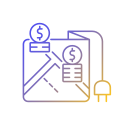Chosen theme: Step-by-Step Guide to Writing a Business Plan for Beginners. Start with clarity, friendly guidance, and practical steps that turn scattered ideas into a simple, confident plan you can share, improve, and use to launch.

Start Here: Why a Business Plan Matters for Beginners
A beginner-friendly business plan forces you to answer what you sell, who needs it, and how you’ll reach them. That clarity prevents shiny-object distractions and helps you say a confident no to mismatched opportunities.
Start Here: Why a Business Plan Matters for Beginners
Luis sketched a one-page beginner plan for a mobile bike repair van. By listing neighborhoods, hours, and pricing, he realized Sundays were gold. That tiny planning insight doubled his early bookings within two weeks.
Define a Real Customer Persona
Pick one vivid customer. Name them, describe a day in their life, and pinpoint the painful moment your offer solves. Specificity beats averages and helps beginners write a business plan that actually resonates.
Competitor Mapping on a Single Page
List three competitors, their price range, key features, and one gap customers complain about. Use that gap to position your offer. This low-tech, beginner-friendly snapshot reveals where your plan can stand out.
Validate With Tiny Tests
Run a quick survey, a landing page, or a five-offer pre-sale. Even ten responses can reshape pricing and features. Tell us your test idea below, and we’ll share a checklist tailored for beginners.

Crafting Your Offer and Value Proposition
The Simple Value Proposition Formula
For target customer who struggle with specific problem, our product delivers core benefit unlike main alternative because unique proof. Fill the blanks honestly. Beginners gain speed by resisting buzzwords and favoring plain evidence.
Features Versus Benefits, Explained by Story
Maya’s granola startup boasted organic oats and rare nuts. Customers cared more about sustained energy during commutes. She reframed her plan around benefits, and repeat orders jumped. Beginners: sell outcomes, not ingredients.
Packaging, Pricing, and Small Experiments
Offer three clear tiers with names people remember. Test a founder’s discount or bundle to learn price sensitivity. Share your proposed tiers in the comments and subscribe for a beginner pricing worksheet.
Marketing, Sales, and Go-to-Market for First Launches
Pick Two Channels You Can Sustain
Beginners succeed by doing less, consistently. Choose two channels your audience already uses, like local partnerships and Instagram Reels. Set a cadence you can keep for twelve weeks, then review honestly.

List the five steps from order to delivery with time estimates. Identify a bottleneck and a backup. Even a one-person beginner business needs a written process to eliminate avoidable delays and rework.
Operations, Team, and Milestones the Lean Way
Assign tasks to names, not titles: outreach, fulfillment, bookkeeping, support. Use lightweight tools you already know. Invite a mentor to review your responsibilities matrix—fresh eyes protect beginners from silent overload.
Operations, Team, and Milestones the Lean Way
Financials for First-Timers: Budgets, Forecasts, and Break-Even
Startup Costs and a Cushion
List one-time costs like equipment and branding, plus three months of operating expenses. Add a 10% cushion for surprises. Beginners who budget honestly avoid emergency cash crunches and keep momentum steady.
Sales Forecast You Can Explain
Forecast units, price, and conversion rate, then sanity-check against your channels. Elena forecasted twenty weekly cookie boxes from two office towers; real sales hit seventeen. Close enough to improve, clear enough to manage.
Break-Even in One Paragraph
Divide fixed costs by unit contribution margin to find break-even units. If costs are $2,000 and margin is $10, you need 200 units. Share your numbers below for a beginner-friendly sanity check.
